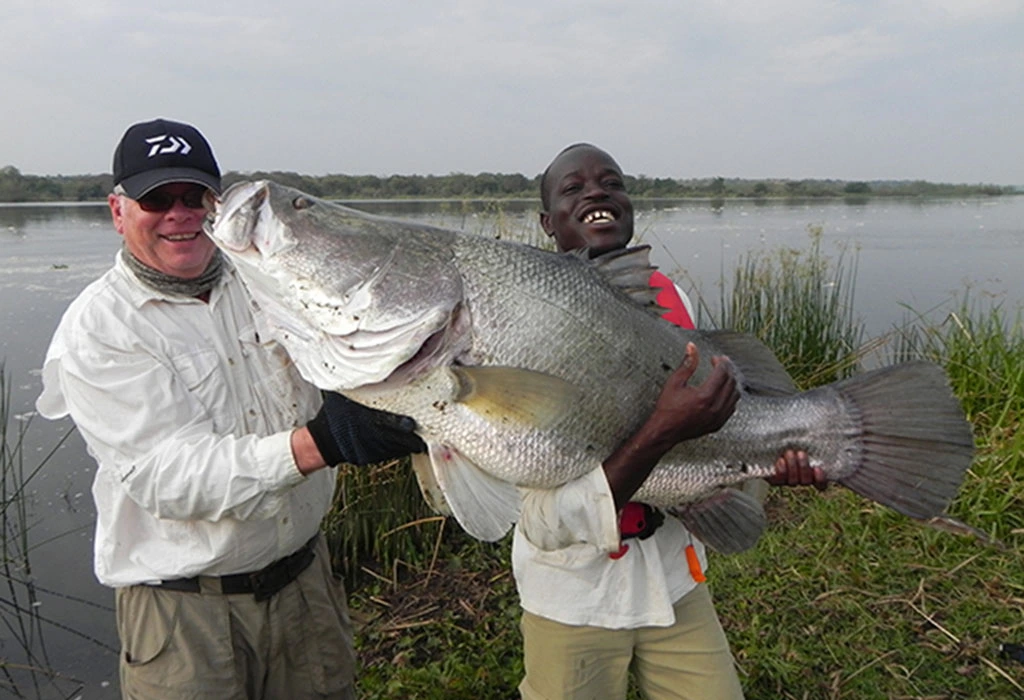The Most Caught Fish in Uganda
Fishing has always been a significant part of Uganda’s culture and economy, with many communities relying on the country’s freshwater lakes and rivers for their livelihood. The most caught fish in Uganda not only provide a rich source of protein for locals but also play a crucial role in the country’s export market. But what exactly is the most popular fish in Uganda, and why is it so vital? In this post, we will explore Uganda’s fishing industry, delve into the most caught fish species, and highlight the methods, challenges, and sustainability efforts surrounding Uganda’s fishing sector.
What Makes Fish Important to Uganda?
Uganda, known as the “Pearl of Africa,” holds vast water resources, including lakes Victoria, Albert, Kyoga, and Edward, along with the Nile River. These waters sustain a thriving fishing industry that plays a crucial role in the country’s economy, culture, and food security.
Fishing extends beyond economic value—it remains deeply embedded in Ugandan society. Many people, especially in rural areas, rely on fish as their primary protein source. The industry also provides thousands of jobs, supporting fishermen, fish farmers, processors, and traders. Fish exports significantly contribute to the national economy, with major markets in Europe and the Middle East.
So, which fish species dominate Uganda’s waters and markets? Let’s dive into the details.
What Are the Most Caught Fish in Uganda?
Among the vast diversity of fish species in Uganda, a few stand out as the most caught and economically significant. These fish are staples in local diets, and their production plays a major role in Uganda’s export industry.
Nile Tilapia (Oreochromis niloticus): The King of Ugandan Fish
Arguably the most caught fish in Uganda, Nile tilapia is a major player in both domestic consumption and export markets. Found predominantly in Lake Victoria, this species thrives in the warm, shallow waters and is known for its mild flavor and flaky texture. Here’s why Nile tilapia stands out:
Economic Importance: Nile tilapia is the leading fish species caught in Uganda, contributing immensely to both domestic markets and the export sector. Uganda exports tilapia to international markets, particularly in the EU and the Middle East, where it is highly regarded.
Taste and Versatility: Nile tilapia is a versatile fish that can be grilled, fried, or served in stews, making it a popular choice in Ugandan cuisine. Its firm flesh and neutral flavor allow it to take on the spices and seasonings typical of Ugandan dishes.
Sustainability: Nile tilapia is relatively resilient, with efficient breeding practices in Uganda’s lakes and fish farms ensuring its continued supply.
Why Is Nile Tilapia So Popular?
Its easy adaptability to both natural lakes and artificial ponds, along with its broad appeal in the culinary world, makes it a top choice for fishermen and consumers alike. The availability of tilapia makes it accessible to even the most remote communities, where fresh fish is often a rare treat.
Nile Perch (Lates niloticus): A Giant of Uganda’s Waters
The Nile perch is another iconic fish of Uganda, particularly abundant in Lake Victoria. While Nile tilapia dominates smaller-scale catches, Nile perch is a key player in commercial fishing.
Size and Growth: Nile perch can grow to impressive sizes, with some individuals reaching up to 200 kg. Its massive size and firm texture make it a prized catch for both local markets and international exports.
Economic Impact: Nile perch is one of the most lucrative fish in Uganda, with the fishery industry targeting Nile perch specifically for export. It is also processed into fillets and other products for the global market.
Challenges: While Nile perch is economically important, its introduction to Lake Victoria has been controversial due to its impact on the ecosystem. As an apex predator, it has significantly reduced the populations of native fish species.
Why is Nile Perch So Sought After?
With its large size, rich taste, and high market demand, Nile perch is a fish of choice for both local consumers and international buyers. Its fillets are widely used in high-end restaurants and seafood markets around the world.
Catfish (Clarias gariepinus): The Ugandan Favorite
Known locally as “mukene,” catfish is another species that’s widely caught and consumed throughout Uganda. This fish is commonly found in Uganda’s rivers, lakes, and even in aquaculture ponds.
Unique Taste and Texture: Catfish is prized for its firm, white flesh and strong flavor. It’s often smoked or fried, which enhances its distinct taste and texture. It’s a favorite in many Ugandan dishes, especially in rural areas where access to other fish species may be limited.
Sustainability: Unlike other species, catfish is able to survive in varying environmental conditions, making it more resilient and easier to farm. This makes it a reliable option for fish farmers.
Cultural Significance: Catfish holds cultural importance in many Ugandan communities. It’s a popular dish during festivals and social gatherings, often cooked in large quantities for family feasts.
What Makes Catfish So Special?
The catfish’s unique, rich flavor and its adaptability to a range of farming conditions make it a valuable asset to Uganda’s fishing industry. Additionally, it’s affordable and accessible, especially in rural communities.
What Fishing Methods Are Commonly Used in Uganda?
Fishing in Uganda is done using a variety of techniques, ranging from traditional methods to more modern, commercial practices. Here’s a look at how fishing is carried out across the country.
Traditional Fishing Methods
In many rural Ugandan communities, fishermen still use traditional methods to catch fish. These methods are passed down through generations and often involve:
Hand Fishing: Fishermen use their hands to catch fish in shallow waters, often wading into lakes and rivers.
Netting: Small-scale fishermen commonly use gillnets or seine nets to catch tilapia and catfish.
Fish Traps: Simple traps made from reeds or bamboo are used to capture fish in shallow waters.
Commercial Fishing
For larger-scale operations, commercial fishing methods are employed. These include:
Trawling: Large vessels use trawl nets to catch fish in deep waters, especially targeting species like Nile perch.
Gillnets: These nets are used extensively to catch Nile tilapia and other species. However, overuse has led to debates on sustainability, as they often capture fish that are too young or not the intended species.
Aquaculture: The Future of Fishing in Uganda
In recent years, aquaculture has become a more prominent method of fish production. Many Ugandans are turning to fish farming, especially for species like Nile tilapia and catfish, as a more sustainable way to meet the growing demand for fish.
Aquaculture Growth: The rise of fish farming offers a solution to the challenges of overfishing and environmental degradation in Uganda’s lakes. It’s seen as a way to ensure consistent supply and increase fish production.
How Is Fish Marketed and Sold in Uganda?
Fish is sold in markets across Uganda, ranging from small rural fishmongers to large urban fish markets like those in Kampala, Jinja, and Entebbe. Fish markets serve as hubs for the wholesale and retail distribution of both fresh and processed fish. They are often crowded, bustling with vendors selling freshly caught fish, fillets, and smoked varieties.
Local Consumption: Most fish is sold locally in markets where consumers purchase fresh fish for their daily meals.
Export Markets: A significant portion of the fish caught in Uganda is exported, especially Nile tilapia and Nile perch. Export markets include the European Union, the Middle East, and Asia, where Ugandan fish is known for its quality and sustainability.
What Are the Challenges Facing Uganda’s Fishing Industry?
Despite its success, Uganda’s fishing industry faces several challenges, many of which threaten the long-term viability of its fisheries.
Overfishing: With the growing demand for fish, overfishing has become a serious issue. Unsustainable practices, such as the use of illegal fishing nets and the capture of undersized fish, are depleting fish stocks.
Invasive Species: The introduction of Nile perch into Lake Victoria has had devastating effects on native fish species, disrupting the ecosystem and reducing biodiversity.
Pollution: Water pollution from agricultural runoff, industrial waste, and untreated sewage is negatively impacting fish habitats, particularly in Lake Victoria.
Climate Change: Fluctuations in water levels and temperatures due to climate change are also affecting fish populations and the overall health of Uganda’s water bodies.
How Can Uganda’s Fishing Industry Become More Sustainable?
To ensure the future of Uganda’s fishing industry, several steps must be taken to promote sustainability:
Regulation of Fishing Practices: Stricter regulations on the size and species of fish caught can help reduce overfishing. Monitoring and enforcement of these regulations will be crucial.
Sustainable Aquaculture: Promoting environmentally friendly fish farming methods, such as cage farming, can reduce pressure on
wild fish stocks.
Education and Awareness: Educating local communities about the importance of sustainable fishing practices is key to ensuring the longevity of Uganda’s fishery resources.
The Future of Fishing in Uganda
The fishing industry in Uganda holds immense potential. With abundant water resources and a rich diversity of fish species, Uganda is poised to become a key player in the global fish market. However, the industry must overcome significant challenges, such as overfishing, pollution, and the impact of invasive species. By promoting sustainable fishing practices, supporting aquaculture, and creating better regulations, Uganda can ensure that its fishing industry thrives for generations to come.




